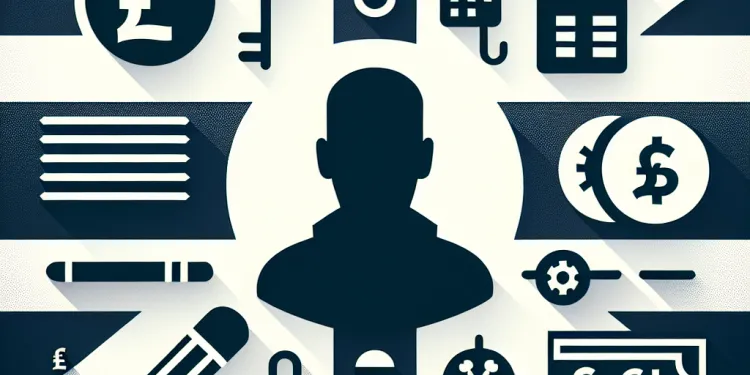
Find Help
More Items From Ergsy search
-

What are the rules for writing to an inmate?
Relevance: 100%
-

Can inmates have personal belongings?
Relevance: 55%
-
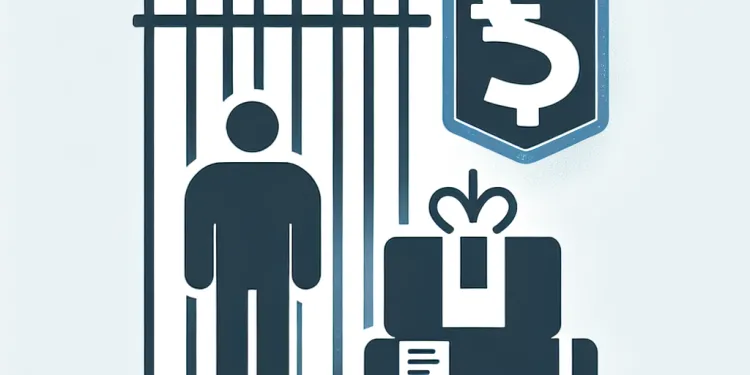
Can inmates receive packages?
Relevance: 46%
-

Can I send money to an inmate?
Relevance: 46%
-
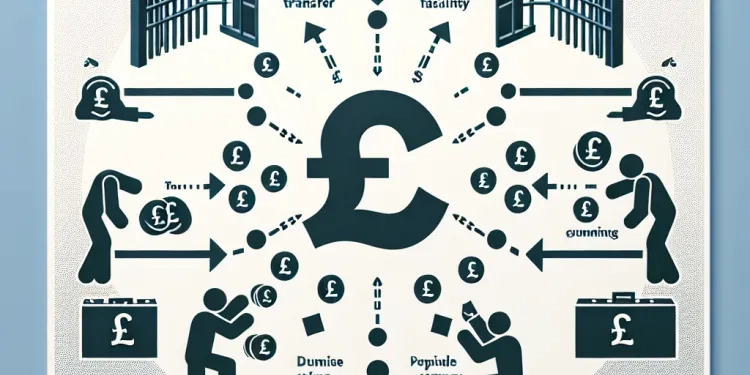
What happens if an inmate is transferred to another facility?
Relevance: 45%
-

How do I write a will?
Relevance: 43%
-

How can I advocate for an inmate's needs?
Relevance: 42%
-

Can inmates access legal assistance?
Relevance: 40%
-

What is an inmate commissary?
Relevance: 40%
-
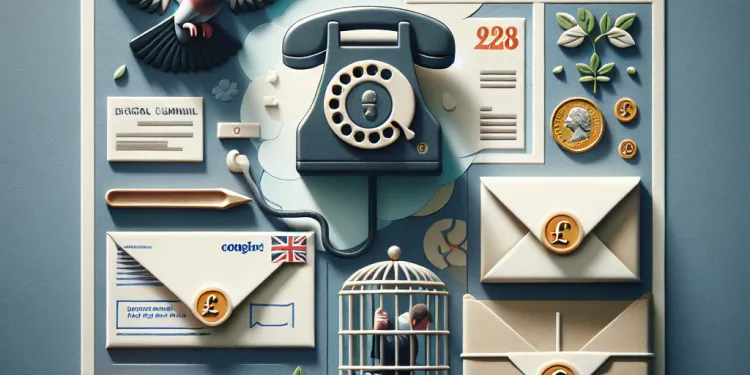
How can I contact someone in prison?
Relevance: 35%
-

What items can I send to someone in prison?
Relevance: 27%
-

What is the seven-year rule relating to inheritance tax?
Relevance: 26%
-

What are the rules regarding smoking?
Relevance: 26%
-

Supreme Court Delivers Key Ruling on Electoral Reform
Relevance: 25%
-

Do these rules affect nicotine content in e-liquids?
Relevance: 25%
-

Can Ofgem or Octopus Energy change compensation rules in the future?
Relevance: 25%
-

Someone I know has been sent to prison.
Relevance: 23%
-
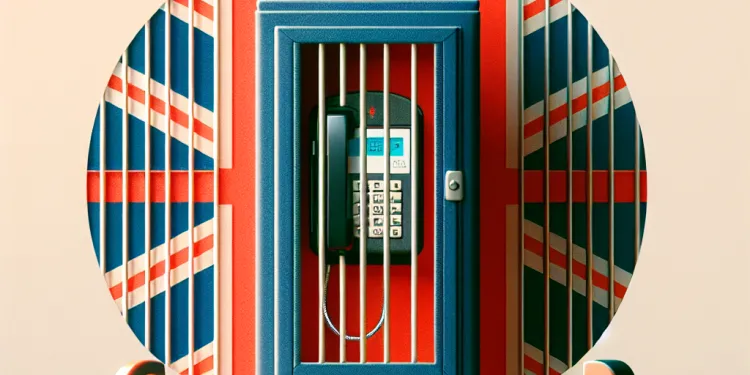
Are phone calls from prison free?
Relevance: 23%
-

Is there a library service in the prison?
Relevance: 23%
-

What are the rules for travel to France, Spain, and Europe on a UK passport?
Relevance: 22%
-

Will I meet with a prison officer?
Relevance: 22%
-

What to expect on the first day in a British prison.
Relevance: 20%
-

Rules on E-cigarettes to Tighten Amid Concerns Over Youth Vaping
Relevance: 20%
-

High Court Rules on Controversial Data Privacy Case
Relevance: 19%
-

Can inmates send mail?
Relevance: 19%
-

What is the 90/180-day rule for Schengen Area travel?
Relevance: 19%
-

How do I find out where they are incarcerated?
Relevance: 19%
-

What age restrictions apply to purchasing e-cigarettes under the new rules?
Relevance: 18%
-

How often can I visit someone in prison?
Relevance: 18%
-

High Court Ruling on Universal Credit 'Unlawful' Cap Pending
Relevance: 18%
-

What types of programs are available for inmates?
Relevance: 17%
-

How much compensation can be expected from Octopus Energy due to Ofgem rules?
Relevance: 17%
-

How are health services provided in prison?
Relevance: 16%
-

Bridging Finance Dangers - Tips on common problems, risks and lending rules in the UK
Relevance: 16%
-

What should I expect when visiting a prison?
Relevance: 16%
-
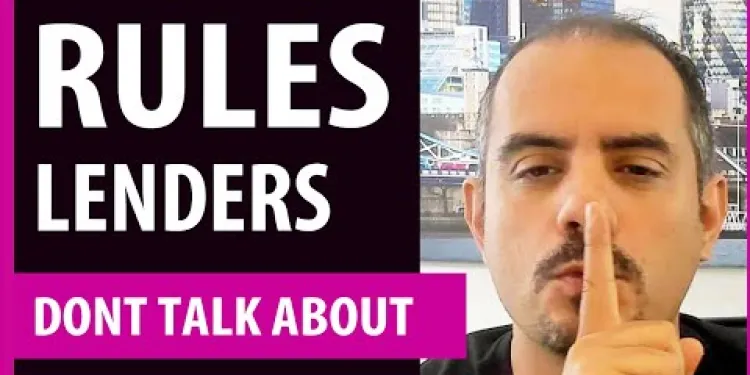
UK Mortgage Rules Lenders Don't Talk About - Debt To Income Ratio
Relevance: 16%
-

Do I get issued with prison clothing?
Relevance: 15%
-

Will I be in a shared or single cell?
Relevance: 15%
-
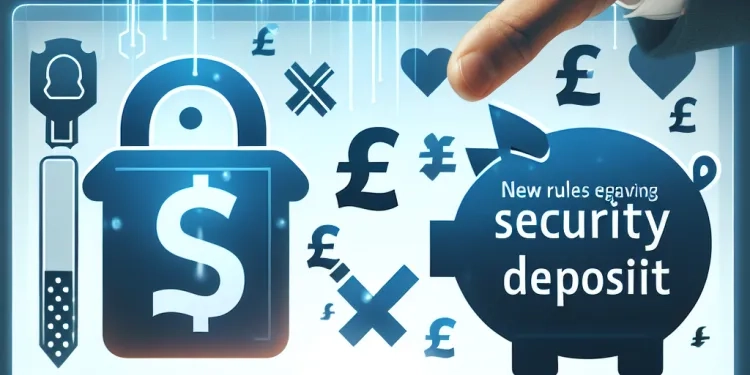
What are the new rules regarding security deposits?
Relevance: 15%
-

Are there any changes expected in inheritance tax rules?
Relevance: 15%
Understanding the Basics
Writing to an inmate in the UK is a thoughtful way to maintain personal connections and offer emotional support. The rules for writing to inmates are designed to ensure security, decency, and the smooth operation of the correctional facility. Before beginning correspondence, it is crucial to be aware of these guidelines to ensure the letters reach the intended recipient without issues.
Addressing the Envelope
When writing to an inmate in the UK, it is essential to address the envelope correctly. Include the inmate's full name, prison number, and the full postal address of the prison. Without these details, the letter may not be delivered. The inmate's number should be used as a unique identifier to prevent any mix-up with other inmates who may have similar names.
Content Restrictions
All letters sent to inmates are subject to inspection and screening by prison authorities. Thus, it is important to avoid any content that could be deemed inappropriate or threatening to security. Refrain from including explicit content, detailed descriptions of criminal activities, or attempts to smuggle contraband, such as coded messages. Letters should focus on personal matters and positive messages to encourage the inmate.
Prohibited Items
Items such as cash, stamps, and Polaroid photos are generally not allowed to be sent directly to inmates through the mail. Many prisons have systems in place to handle money sent to inmates, such as through postal orders or bank transfers to their prison accounts. Always check the specific prison’s rules regarding permissible items and alternative ways to send money or other essentials.
Frequency and Length
There are usually no strict rules on the number of letters an inmate can receive. However, practical considerations, such as the inmate's ability to store letters and the prison's capacity to manage correspondence, may affect delivery. Be concise and respectful in your communication, staying mindful of the limitations faced by the recipient within the correctional environment.
Digital Correspondence
While traditional mail is the primary mode of communication, some UK prisons offer email services to facilitate faster communication. These services often require setting up an account and paying a fee. Be sure that both you and the inmate understand how to use the service effectively, including any restrictions on the number of emails and the type of content that can be sent.
Respect and Support
When writing to an inmate, maintaining a respectful tone and showing support is crucial. The aim is to provide encouragement and help maintain their social connections to the outside world. Respect their privacy and emotional state by avoiding pressure for immediate replies, as access to writing materials can be limited. Constructive and positive topics often result in the most meaningful exchanges.
Understanding the Basics
Writing to someone in jail in the UK is a kind way to keep in touch and show you care. There are rules for writing letters to keep everyone safe and make sure the prison runs smoothly. Knowing these rules helps your letter get to your friend without problems.
Addressing the Envelope
To send a letter to someone in jail, you must write the address correctly. Write the person's full name and prison number, and the whole address of the prison. If you miss any detail, the letter might not get there. The prison number stops letters getting mixed up with someone else’s.
Content Restrictions
Prison staff will check all letters sent to people in jail. Don’t write anything that could be unsafe or cause trouble. Avoid rude language, talking about bad things, or hiding secret messages. Stick to personal topics and share good, friendly messages to cheer them up.
Prohibited Items
You cannot send things like money, stamps, or instant photos in the mail to people in jail. Prisons have other ways to send money, like postal orders or bank transfer to their prison account. Always check what the prison allows and learn the right way to send money or other needs.
Frequency and Length
There’s usually no limit on how many letters someone in jail can get. But, too many letters can be hard to handle. Keep your letters simple and polite, and remember the person in jail might have limited space or time to read and keep letters.
Digital Correspondence
Most letters are sent by mail, but some UK prisons also let you send emails. This is quicker but might cost money. Make sure you and the person in jail know the rules and how to use the email service, like how many emails you can send and what you can talk about.
Respect and Support
When writing a letter, always be kind and supportive. Your aim is to make the person in jail feel better and stay connected to outside life. Respect their feelings and don’t expect them to reply quickly because they might not have everything they need to write back right away. Talk about happy things to have a good conversation.
Frequently Asked Questions
What information should be included in the letter's address?
Include the inmate's full name, their identification number, and the facility's address.
Can I send photographs with my letter?
Yes, you can send photographs, but there may be restrictions on the size and number. Check with the specific facility for their rules.
Are there restrictions on the type of paper I can use?
Some facilities may have restrictions, such as prohibiting colored paper or paper with embellishments. Plain, white paper is usually a safe choice.
Can I send a self-addressed stamped envelope (SASE) with my letter?
Some institutions allow SASEs, but others do not. It's best to check the specific facility's regulations.
Can I write to multiple inmates in the same facility?
Yes, but each letter must be sent individually and addressed properly.
Are there any restrictions on language or content in the letter?
Yes, letters should not contain any offensive language, threats, or discussion of illegal activities.
Is there a limit to the length of the letter?
There may not be a set limit, but keeping the letter concise is usually advisable. Some facilities might have restrictions, so check with them.
Can I send books or magazines directly to inmates?
Typically, books and magazines must be sent directly from a publisher or bookstore, not from individuals.
How should I address a letter if I don't have the inmate's ID number?
The inmate's ID number is usually required. If you don't have it, contact the facility to find out how to proceed.
Can I include stickers or drawings in my letter?
Most facilities prohibit stickers or anything that can be attached to the paper, and drawings may be restricted.
Are there restrictions on the types of envelopes used?
Plain, standard-sized envelopes are generally acceptable. Avoid using envelopes with metal clasps or embellishments.
Can inmates receive letters from outside the country?
Yes, generally inmates can receive international mail, but it must adhere to the same guidelines as domestic mail.
Will my letter be read by prison staff?
Yes, letters to inmates are typically screened by prison staff to ensure they comply with regulations.
Can I send greeting cards to inmates?
Some facilities allow greeting cards, but they might have restrictions, such as no cards with glitter or pop-ups.
Are there specific rules for sending legal documents to an inmate?
Legal mail often has different rules, such as needing to be sent in a special envelope marked accordingly. Check with the facility for details.
What happens if my letter does not comply with the rules?
Non-compliant letters may be returned to the sender or result in the privilege of mail being revoked for the inmate.
Can I send money through the mail to an inmate?
Normally, money should not be sent through the mail. Instead, use approved methods such as a deposit service.
How frequently can I send letters to an inmate?
There are usually no limits on the frequency of letters, but time for delivery may vary.
Can I email an inmate instead of sending a physical letter?
Some facilities offer an email service where you can send messages electronically instead of traditional mail.
Is it possible to verify if my letter was received by the inmate?
There usually isn't a way to verify receipt directly, but you may ask the inmate to confirm upon receipt in their reply to you.
What should you write in the address on a letter?
When you write a letter, you need to include the address so it gets to the right person. Here's what you should write:
- The person's name
- The house or building number and the street name
- The town or city
- The state or county
- The postcode or ZIP code
To make sure you don't forget anything, you can use a checklist.
Write down the prisoner's full name. Write their ID number too. Don't forget to add the address of the place where they are staying.
Can I send photos with my letter?
Yes, you can send pictures! But there might be rules about how big and how many. Ask the place you are sending them to about their rules.
Can I use any kind of paper?
Is there a certain kind of paper you need to use? Not all paper is okay to use everywhere. Some places or times need special paper.
To make it easier to know what kind of paper to use, you can:
- Ask someone for help or look for signs
- Use pictures or labels on the paper packs to know which one is right
- Use websites or apps that explain paper types
Some places have rules about what paper you can use. They might not let you use colored paper or fancy paper. It is best to use plain, white paper.
Can I send an envelope with my address and a stamp?
Yes, you can. This is called a self-addressed stamped envelope (SASE). It helps someone send something back to you.
Here’s how to do it:
- Write your name and address on an envelope.
- Put a stamp on it.
- Put this envelope inside the bigger one with your letter.
A SASE makes it easy for people to reply to you.
Using pictures or asking someone for help can make this easier.
Some places will let you use SASEs. But some places won't. It’s a good idea to find out the rules for the place you are interested in.
Can I send letters to more than one prisoner in the same place?
Yes, you can. But you need to send each letter one at a time and make sure the address is correct.
Can I use any words I want in the letter?
Yes, letters should not have any bad or mean words, talk about hurting people, or talk about doing bad things that are against the law.
Can the letter be too long?
There is no fixed rule, but try to keep your letter short. Some places might have rules, so it's a good idea to ask them first.
Can I send books or magazines to people in prison?
People can usually send books and magazines if they come straight from a shop or the company that makes them. They can't come from other people.
How do I write a letter if I don't know the prisoner's ID number?
You usually need the inmate's ID number. If you don't have it, call the place where they are to ask what to do next.
Can I put stickers or drawings in my letter?
Most places do not allow stickers or things that stick to paper. There might be rules about drawings, too.
Can I use any kind of envelope?
Use plain envelopes that are regular size. Do not use envelopes with metal parts or decorations.
Can prisoners get letters from other countries?
Yes, prisoners can get letters from other countries. Family and friends can send them.
Here are some tips to help:
- Write clearly so it is easy to read.
- Use short sentences.
Ask for help from a friend or family member if you need it.
Yes, people in prison can get mail from other countries. The rules for these letters are the same as letters from inside the country.
Will prison staff read my letter?
Prison workers might read your letter.
If you want help with writing, you can:
- Use simple words and sentences.
- Ask someone you trust to help you.
- Use a computer or phone to check your spelling.
Yes, prison staff usually read letters to make sure they follow the rules.
Can I send cards to people in prison?
Yes, you can send cards to people in prison. Make sure the cards follow the prison's rules.
Here are some tips:
- Use simple paper cards.
- Do not include anything extra inside like stickers or glitter.
- Write with pen and make your message clear.
If you are unsure, ask the prison staff for help.
Some places let you send greeting cards. But there might be rules, like no cards with glitter or pop-ups.
What are the rules for sending legal papers to someone in prison?
Here are some tips:
- Check the prison rules first. Each prison might have different rules.
- Use the right address. Make sure you have the full name and number of the prisoner.
- Seal the papers in an envelope marked "Legal Mail" if allowed.
- Ask a lawyer or a legal helper if you need more advice.
Support Tools:
- Use bigger fonts or colored paper to make it easier to read.
- Look for help from a friend or family member.
Legal mail has special rules. It needs to be sent in a special envelope with a special mark. Ask the place you are sending it to for more information.
What if my letter breaks the rules?
If letters do not follow the rules, they might be sent back to the person who wrote them. Also, if the rules are not followed, the person in jail might not be allowed to get any more letters.
Can I send money to someone in jail by mail?
Usually, it's not safe to send money in the mail. It's better to use other ways, like putting money in a bank.
How often can I send letters to someone in jail?
You can send letters to someone in jail. Check the jail rules. You might need to ask how many letters you can send. Some jails let you send many letters. You can also ask the jail staff for help.
Use easy words in your letters. You can add drawings or pictures to make the letter nice. This can help the person in jail feel better.
You can send letters as often as you like. But it might take different amounts of time for them to arrive.
Can I send an email to someone in jail instead of a letter?
Some places let you send emails instead of letters. This means you can use a computer to send a message quickly.
Can I check if my letter got to the person in prison?
You can use some ways to see if your letter reached the person in prison. Here are some tips:
- Ask the person in prison to send a letter back to you.
- Use a tracking number when you send your letter.
- Talk to the prison staff if you need help.
These steps can help you know if your letter made it to the person you wrote to.
It's hard to know if the person in prison got your letter. You can ask them to let you know when they write back.
Useful Links
- Ergsy carfully checks the information in the videos we provide here.
- Videos shown by Youtube after a video has completed, have NOT been reviewed by ERGSY.
- To view, click the arrow in centre of video.
- Most of the videos you find here will have subtitles and/or closed captions available.
- You may need to turn these on, and choose your preferred language.
- Go to the video you'd like to watch.
- If closed captions (CC) are available, settings will be visible on the bottom right of the video player.
- To turn on Captions, click settings .
- To turn off Captions, click settings again.
More Items From Ergsy search
-

What are the rules for writing to an inmate?
Relevance: 100%
-

Can inmates have personal belongings?
Relevance: 55%
-

Can inmates receive packages?
Relevance: 46%
-

Can I send money to an inmate?
Relevance: 46%
-

What happens if an inmate is transferred to another facility?
Relevance: 45%
-

How do I write a will?
Relevance: 43%
-

How can I advocate for an inmate's needs?
Relevance: 42%
-

Can inmates access legal assistance?
Relevance: 40%
-

What is an inmate commissary?
Relevance: 40%
-

How can I contact someone in prison?
Relevance: 35%
-

What items can I send to someone in prison?
Relevance: 27%
-

What is the seven-year rule relating to inheritance tax?
Relevance: 26%
-

What are the rules regarding smoking?
Relevance: 26%
-

Supreme Court Delivers Key Ruling on Electoral Reform
Relevance: 25%
-

Do these rules affect nicotine content in e-liquids?
Relevance: 25%
-

Can Ofgem or Octopus Energy change compensation rules in the future?
Relevance: 25%
-

Someone I know has been sent to prison.
Relevance: 23%
-

Are phone calls from prison free?
Relevance: 23%
-

Is there a library service in the prison?
Relevance: 23%
-

What are the rules for travel to France, Spain, and Europe on a UK passport?
Relevance: 22%
-

Will I meet with a prison officer?
Relevance: 22%
-

What to expect on the first day in a British prison.
Relevance: 20%
-

Rules on E-cigarettes to Tighten Amid Concerns Over Youth Vaping
Relevance: 20%
-

High Court Rules on Controversial Data Privacy Case
Relevance: 19%
-

Can inmates send mail?
Relevance: 19%
-

What is the 90/180-day rule for Schengen Area travel?
Relevance: 19%
-

How do I find out where they are incarcerated?
Relevance: 19%
-

What age restrictions apply to purchasing e-cigarettes under the new rules?
Relevance: 18%
-

How often can I visit someone in prison?
Relevance: 18%
-

High Court Ruling on Universal Credit 'Unlawful' Cap Pending
Relevance: 18%
-

What types of programs are available for inmates?
Relevance: 17%
-

How much compensation can be expected from Octopus Energy due to Ofgem rules?
Relevance: 17%
-

How are health services provided in prison?
Relevance: 16%
-

Bridging Finance Dangers - Tips on common problems, risks and lending rules in the UK
Relevance: 16%
-

What should I expect when visiting a prison?
Relevance: 16%
-

UK Mortgage Rules Lenders Don't Talk About - Debt To Income Ratio
Relevance: 16%
-

Do I get issued with prison clothing?
Relevance: 15%
-

Will I be in a shared or single cell?
Relevance: 15%
-

What are the new rules regarding security deposits?
Relevance: 15%
-

Are there any changes expected in inheritance tax rules?
Relevance: 15%


